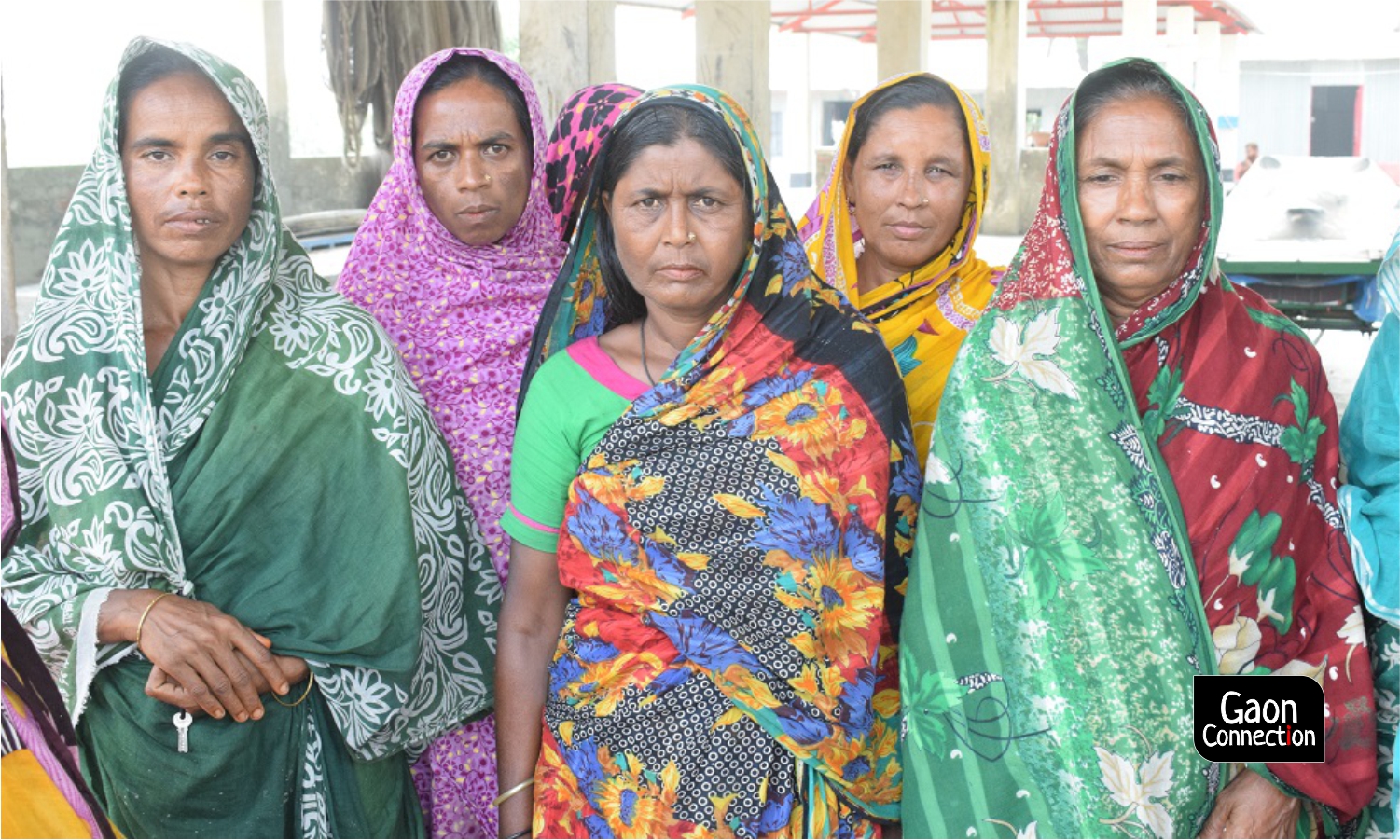Gutting stories of tiger widows, women who lost their husbands to Bengal tigers in Bangladesh’s Sundarbans
Over 1,000 women in villages along the southwest coast of Bangladesh, adjoining the Sundarbans mangrove forest, are ostracised because their husbands were killed by Bengal tigers.


Tiger widows in Datinakhali village in Burigoaliny union of Shyamnagar, Bangladesh. Photo: Rafiqul Islam Montu
Shyamnagar Upazila in the Satkhira district on the southwest coast of Bangladesh has six unions. People here, especially from Gabura, Munshigonj, and Burigoaliny unions, at least 80 per cent of them, heavily depend on the resources of the Sundarbans for survival.
But, danger looms here.
The Sundarbans mangrove forest, which spans over 10,000 square kilometres between India and Bangladesh, is home to at least 86 Bengal tigers, many of them man-eaters.
For many women in the region, life is all about fighting to survive. Once confined to their homes and engrossed in daily chores, these women now step out to earn a living. The responsibility of providing for their families is on them, for they lost their husbands to tiger attacks. They are called tiger widows (bagh bidhoba) and are ostracised overnight for bringing bad luck, and untimely death, to their partners.

Aged tiger widows are often abandoned by their adult sons. Women, widowed at a young age, and with kids to take care of, shattering gender stereotypes and engage in shrimp farming, fishing, and catching crabs at the Sundarbans, work traditionally done by men.
LEDARS (Local Environment Development and Agricultural Research Society) Bangladesh, a non-governmental organisation that helps tiger widows reintegrate back to the superstitious society, estimated that over 519 men in the area died of tiger attacks between 2001 and 2011. In 2016, three people were killed in tiger attacks, and one was injured.
That puts the number of tiger widows in the area above 520. Local elders say the number is over 1,000, considering many women were widowed before 2001.
Gaon Connection spoke to some tiger widows

Manjila Begum, 42, of Datinakhali village in Burigoaliny union, lost her husband Hasan Ali to a tiger attack. The family used to survive on Ali’s income, who was once a farmer. When shrimp farming took over farmlands, Ali turned to fishing to make a living. He had his own boat and used to catch fish and crabs in the Sundarbans canal. One day, Ali and two of his colleagues were attacked by a tiger. Ali did not survive. Manjila’s life turned upside down overnight.

Sonamani, 62, is a tiger widow from Munshigonj fishermen village of Shyamnagar. She lost not one, but two husbands to tiger attacks. She is a pariah in the village. “Nobody wants to mingle with me saying tiger took my husband,” she told Gaon Connection.

Seeing Manjila Begum talking to us, a few other women who lost their husbands to tiger attacks came forward. They are Rizia Begum lost her husband Abdus Samad Ghazi. Zahura Khatun and Amena Khatun were married to Abdul Majid Sardar and Asad Ghazi, respectively. Taiba Begum lost her partner Mahmud Hossain and Rabia Begum, Abdus Samad Sardar. Rashida Khatun’s husband Manu Mollah, Anwara Khatun’s husband Abdul Majid, and Jahanara Khatun’s husband Moksed Sardar were killed by tigers.

A life in abject poverty, ostracisation
Tiger widows live in absolute poverty. Add to it, the superstitions in the society and the consequent ostracisation, these women barely survive. Some villagers Gaon Connection interacted with, without hesitation, blamed these women for the ill-fate of their husbands.
Their houses are shaky, many of them without roofs – blown away by storms and cyclones. While some women borrowed money from some moneylenders in the area, a few others took loans from NGOs. Now, in addition to the fear of succumbing to illnesses or being hit by another natural disaster, tiger widows endure the burden of debts too. They complained authorities don’t do much for them.
Abul Kashem Moral, Munshigonj union parishad chairman, however, was of the opinion that things are changing with time. With a rise in education in the area, people, he said, understood the plight of tiger widows. “We try to help them as much as possible. Some NGOs provide them employment too,” Moral told Gaon Connection.

Demand for alternative employment options
Civil society representatives have called for alternative employment for tiger widows. They demand necessary steps to be taken to make available government help and low-interest loans, the inclusion of these women in income-generating programmes, and ensuring children from these families continue their education.
Ranjit Barman, a teacher at Sundarbans Girls’ Secondary School in Shyamnagar, said shrimp farming is what destroyed the livelihoods of farmers in the area, and that is what forced them to head to the Sundarbans.
Maksudur Rahman, executive director of the Bangladesh Environment and Development Society (BEDS), a Sundarbans-based environmental organisation, said peoples’ dependence on the Sundarbans must reduce, and that there should be alternatives to going to Sunderbans to make a living.
The plight of women who lose their husbands to tiger attacks in the villages near Indian Sunderbans is no different.

